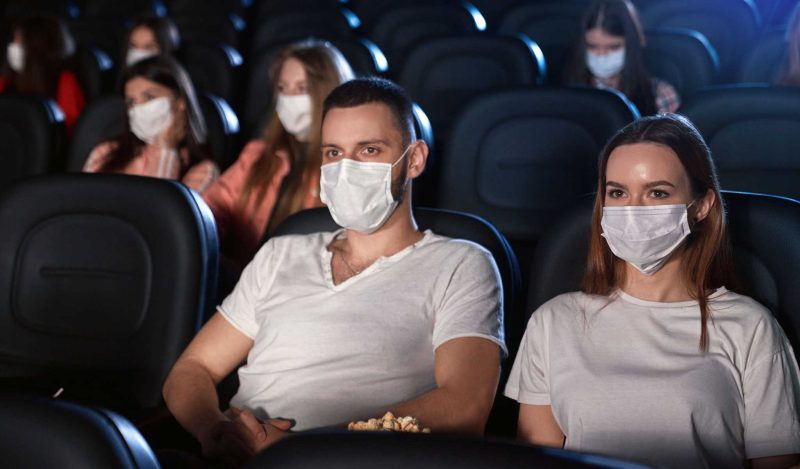Even in California, covid restrictions have been lifted and life is back to the old normal in most respects. Public health agencies are no longer recommending masks or vaccines. Even the CDC has moved on. You can almost pretend that the pandemic never happened, unless you want to attend a live performance of classical music. Performing arts organizations just can’t let go of the toxic cult of masking.
Some progress has been made. The San Francisco Symphony STRONGLY recommends masks (all caps) but they are not required. In practice around 5-7 percent of audience members at a recent concert were wearing them. San Francisco Performances followed, dropping both mask and vaccine passport requirements early in 2023. The San Francisco Opera will lift covid protocols for the 2023 season.
However, some other organizations, such as Philharmonia Baroque and Cal Performances have only recently dropped vaccination passports and are still requiring masks. Natalya Murakvur has reported a similar mixed bag for New York City.
I have discussed this issue with people who have experience in the management side of performing arts, which I do not. I have heard two views on how the decisions about masks are made:
- The box office will have an opinion on whether more people are staying away because they do not want to wear a mask, or more people would not attend an unmasked event out of safety concerns. The performance of one of the longer operas, including time for entry, exit and intermissions can be six to seven hours.
- Most performing arts organizations run at a loss from box office revenues and make it up by donations. A few large donors who may also sit on the board contribute the majority of donations. The views of the donors may influence the way the organization approaches the masking and vaccine passport issue.
I plan to go with the second assumption and write the board members directly. I am attaching a letter that I planned to send to the San Francisco Opera. I did not send it because they changed their policy before I had the letters printed and ready to mail. I may send this letter to other organizations that are lagging in their policies. If you can find some inspiration in it, then feel free to repurpose the content to address this issue in your community.
The Futility of “Stopping the Spread”
From the beginning there have been two strategies for dealing with the covid outbreak:
- Herd immunity – The premise of this approach is that nearly everyone is going to get exposed to covid, sooner or later. Once enough people have become infected and recovered, we would have population immunity and the outbreak would recede to endemic levels. The original “flatten the curve” program was based on this premise. Some infectious disease scientists tweaked this approach slightly to include focused protection of the most vulnerable. Flattening the curve was intended to move some infections forward in time. This would not change the result, it would only spread out the process. Some people would get sick later rather than sooner, but everyone who was going to get it would get it.
- Zero Covid – This approach was based on the belief that suppression measures would, if followed strictly and for long enough, banish the virus permanently. Some questions about zero covid are:
- If the virus goes away, where does it go?
- If we stop doing the preventive measures, would the epidemic pick up where it left off?
- Do we have to keep doing the suppression measures forever?
Initially the herd immunity strategy was adopted through “flatten the curve” with the intention of preventing hospitals from overloading. Then a shift was made to zero covid. That is when you started hearing “slow the spread” everywhere. For about two years, California followed a policy of zero covid, waiting for a vaccine. The vaccine was supposed to end the epidemic once everyone was vaccinated. The vaccine arrived but did not work as planned, everyone got covid, and we were back to the herd immunity mode.
By 2023, most of the world has accepted that we are all going to get covid and moved on. Most of the world, that is, except for classical music organizations. Classical music is still stuck on zero covid. The policy of zero covid was a total failure everywhere it has been tried. Even China has admitted failure and moved on, after widespread social unrest.
It is now understood by almost everyone outside of the performing arts that herd immunity is inevitable. Everyone is going to get exposed to covid. There is no long-term solution in which this does not happen. This means that you, me, the orchestra, the stage crew, and all of the audience members are going to be exposed to covid if they have not already. There is no hiding from it.
But for the moment, let’s do a thought experiment. Suppose that we were still trying zero covid. If that was ever going to work, it would have required all of society to buy in. It would not be enough to stop the spread in stores or schools and let it spread elsewhere. It would have to be stopped everywhere. Today, when zero covid is in the rear view, what is the point of trying to stop the spread during classical music performances? If you limit infection in the concert hall, people walk out of the performance and walk right into a bar, a restaurant, a hotel lobby, or get in a cab. Even if you could ensure that no one gets infected during a performance, but they get it before or after – what good is that? Have you accomplished anything?
Being the lone holdout in the zero covid experiment, the performing arts are the holdout soldiers still fighting World War II decades after it ended.
Masks
Observational Studies
The arguments against masks are they do not work, and they are harmful. You may believe that there is some scientific evidence of mask effectiveness, probably because the media and public health officials endlessly repeat that “masks stop the spread.” This is simply not true. Unfortunately, public health officials have engaged in a massive gaslighting operation.
Prior to covid, masks have been studied by researchers for decades because of their use in medical settings. There have been RCTs (Randomized Controlled Trials) of mask effectiveness on stopping virus transmission.
During the covid epidemic, a Danish group did a randomized controlled trial of mask effectiveness specifically in relation to covid spread. This study replicated the result of the prior studies, finding no effect of masks. Also during covid, a University of Louisville study in 2021 – using the CDC’s own data — showed that mask usage and mandates “are not associated with lower SARS-CoV-2 spread among US states.”
In March 2020, the CDC published a “systematic review” of the prior studies. This is a term of art meaning that the data from all of the studies is examined as a whole. They found “no significant effect of face masks.”
In a 2020 review of the 67 studies, Cochrane concluded “the pooled results of randomised trials did not show a clear reduction in respiratory viral infection with the use of medical/surgical masks during seasonal influenza.” Cochrane in 2023 updated their systematic review to include the most recent studies, in total 78. The new review “Physical interventions to interrupt or reduce the spread of respiratory viruses” concluded:
The pooled results of RCTs did not show a clear reduction in respiratory viral infection with the use of medical/surgical masks. There were no clear differences between the use of medical/surgical masks compared with N95/P2 respirators in healthcare workers when used in routine care to reduce respiratory viral infection.
Dr Vinay Prasad MD summarized the Cochrane findings this way:
Here is the big summary finding. With 276,000 participants in RCTs or cluster RCTs, masking does nothing. No reduction in influenza-like or Covid-like illness and no reduction in confirmed flu or COVID. That’s stone-cold negative.
A literature review posted on the CDC’s website concluded “Although mechanistic studies support the potential effect of hand hygiene or face masks, evidence from 14 randomized controlled trials of these measures did not support a substantial effect on transmission of laboratory-confirmed influenza.”
Infectious disease expert Dr Michael Osterholm PhD MPH, Regents Professor, McKnight Presidential Endowed Chair in Public Health, the director of the University of Minnesota Center for Infectious Disease Research and Policy and a adjunct professor at their Medical School, has said
“Never before in my 45-year career have I seen such a far-reaching public recommendation issued by a governmental agency without a single source of data or information to support it. This is an extremely worrisome precedent of implementing policies not based on science-based data.”
Here are some additional aggregated links:
- “Forty Five Years of Mask Studies Prove they are Worthless”
- “Masks are neither effective nor safe: A summary of the science”
- “Are Face Masks Effective? The Evidence”
- “47 Studies confirm ineffectiveness of masks for covid and 32 more confirm their negative health effects”
- “Masks Don’t Work: A Review of the science”
- Your mask study cheatsheet: 12 studies about the fecklessness of masking society
- More than 150 comparative studies and articles on mask ineffectiveness and harms (Study After Study Confirms Masks Don’t Work: The evidence base continues to grow
Population Evidence
If masks worked we would see a big difference when they were adopted. The author Ian Miller has assembled page after page of graphs comparing masked and unmasked populations. Never has any discernible difference between the two been observed.
This graph was supplied by Miller to City Journal:


Here is another graph provided by Miller to the same publication, showing the timing of mask adoptions in Sweden and Germany:


The website Covid Charts Quiz provides a series of comparisons between states or regions within states that did and did not have masking. The point of the quiz is to show that the outcomes are impossible to distinguish. Here is one such chart showing three states side-by-side. The blue-line state had masks while the other two did not.
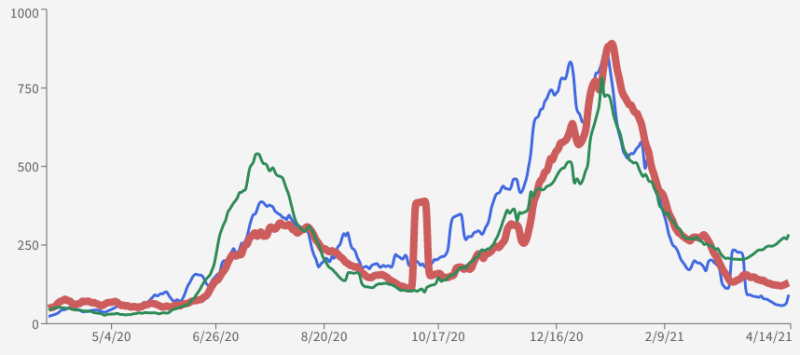

The quiz contains page after page of similar charts showing no difference between states or countries that did mask from those that did not.
Even our local San Francisco area news site SFGate says that mask mandates are ineffective in the Bay Area: “Do mask mandates work? Bay Area COVID data from June says No.”
I have been corresponding with a Bay Area classical musician who has played in and observed the masking practices of several orchestras. The musician wrote to me:
For the last two years, the local pit orchestras unwittingly ran their own mask trial. The wind musicians (woodwinds and brass) were unmasked for hours and hours at a time at close range with all the non-wind players who were still required to mask. Did those unmasked wind musicians contract Covid at a higher rate than the masked musicians during those two years? They absolutely didn’t.


The Aerosol Science
The reason that masks do not stop viral spread is that viral particles are smaller than the holes in the masks. The relevant field of scientific expertise is aerosols. See this testimony to the State Senate of New Hampshire in which certified industrial hygienist Stephen Petty explains why masks cannot work to stop viral spread. Here is a slide from Petty’s deck: slide deck:
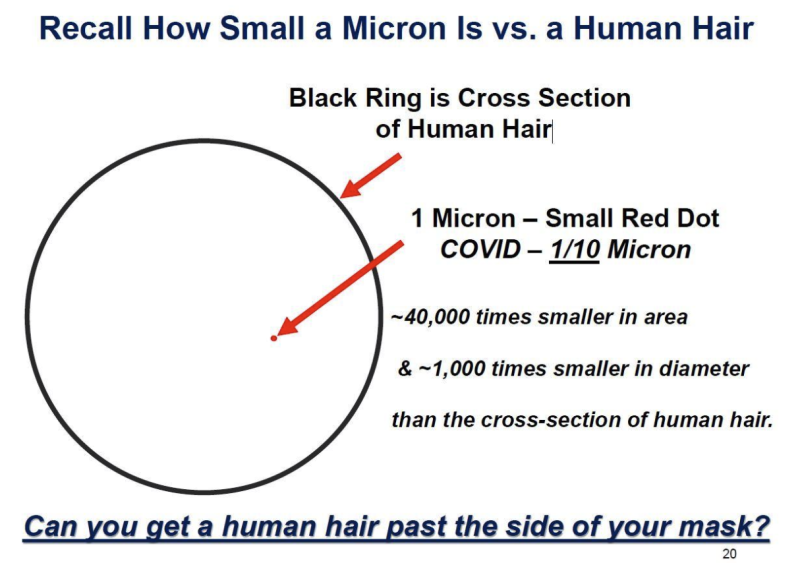

The Retreat by Public Health Officials
Even public health officials have begun to admit in the last year that masks do not slow or stop viruses. One public health official said masks slow the spread because when you see someone wearing a mask you assume they are sick and walk away from them. What a massive retreat that is.
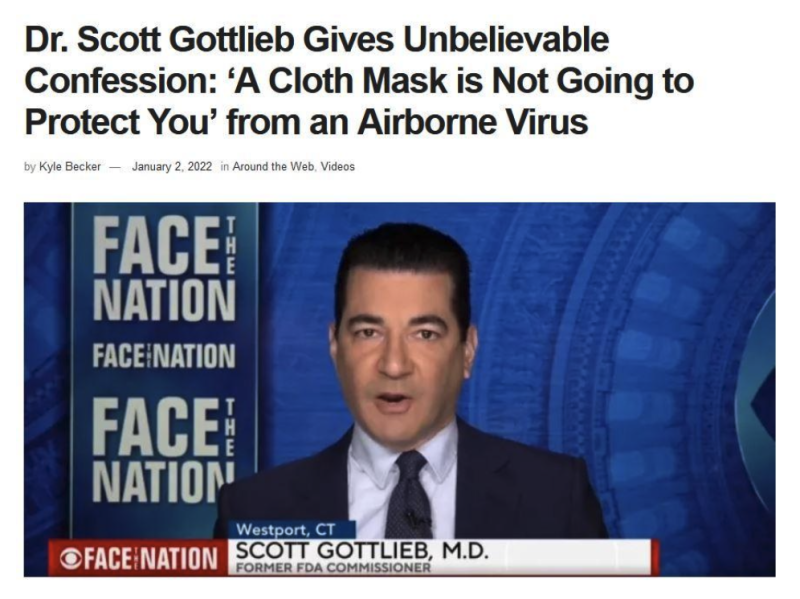

If masks don’t work, why are you wearing them? Masking gives people the feeling that they are helping out. People want to feel that they are contributing to the social good. People feel powerless to stop the epidemic, but they want to do something. On top of that, government officials want to be seen as effective, when in reality there is nothing they can do to stop the spread of covid.
We cannot neglect the virtue-signaling component. Wearing a mask is a symbol. The mask enables the person to demonstrate that they care about other people. Yes, this makes people feel good, but it does nothing that makes anyone safer. Your mask does not protect you. Your mask does not protect me.
Harms of Masking
You might say “Better safe than sorry” and “What’s the harm in it?” Jim Meehan, MD, in An Evidence Based Scientific Analysis of Why Masks are Ineffective, Unnecessary, and Harmful lists these harmful effects:
- Medical masks adversely affect respiratory physiology and function
- Medical masks lower oxygen levels in the blood
- Medical masks raise carbon dioxide levels in the blood
- SARS CoV-2 is armed with a “furin cleavage site” that makes it more pathogenic
- Medical masks trap exhaled viral (and other) pathogens in the mouth/mask interspace, increase viral/infectious load, and increase the severity of disease
- SARS CoV-2 Becomes More Dangerous When Blood Oxygen Levels Decline
- The furin cleavage site of SARS-CoV-2 increases cellular invasion, especially during hypoxia (low blood oxygen levels)
- Cloth masks may increase the risk of contracting Covid-19 and other respiratory infections
- Wearing a face mask may give a false sense of security
- Masks compromise communications and reduce social distancing
- Untrained and inappropriate management of face masks
- Masks Worn Imperfectly Are Dangerous
- Masks collect and colonize viruses, bacteria, and mold
- Wearing a face mask makes the exhaled air (respiratory plumes) go into the eyes
- Contact tracing studies show that asymptomatic carrier transmission is very rare
- Face masks and stay at home orders prevent the development of herd immunity
- Face masks are dangerous and contraindicated for a large number of people with pre-existing medical conditions and disabilities
The cardiac and pulmonary harms caused by mask wearing should be of particular interest to the many classical music venues, which tend to attract an audience from the older demographic who are more likely to have pre-existing vulnerabilities such as respiratory problems and hypertension.
Masks may shed toxic compounds into the body of the wearer. Masks contain microplastics and other chemicals that may be inhaled.
- “Face masks as a source of nanoplastics and microplastics in the environment;”
- “Tiny particles of plastic have been detected in human blood for the very first time. They can’t be filtered out”
The health implications of this are unknown, but I, for one, do not want to be part of this medical experiment.
I have not yet mentioned the massive environmental harm caused by the disposal of billions and billions of these useless objects. Waterways are clogged, birds and wildlife are getting tangled in them, and resources are wasted in their production.
Social and Emotional Harm
Masking harms society because we can no longer see each other’s faces as we are meant to do. Masking makes people look ugly and unattractive. Even the President, Joseph Biden says that he “looks stupid” with a mask on.
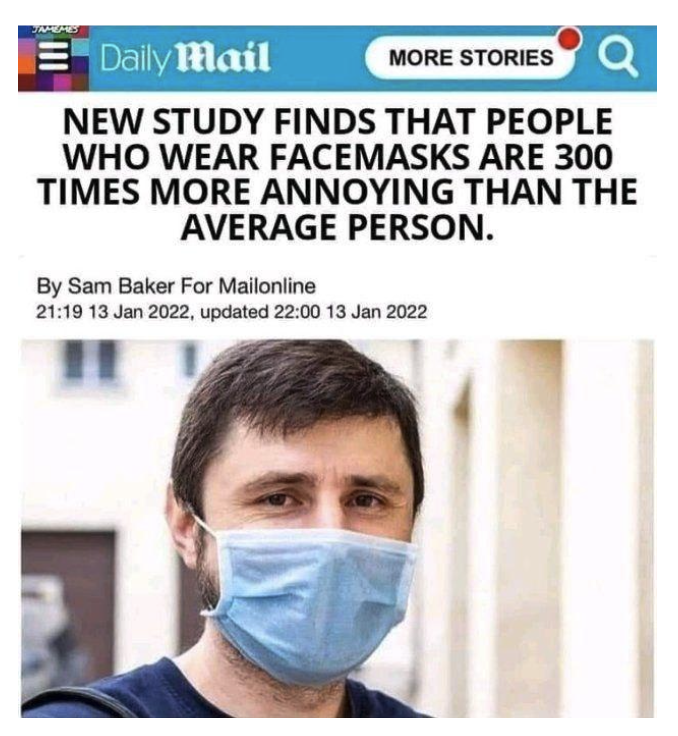

People no longer have an emotional connection while speaking when wearing masks. And we can no longer understand each other’s speech. A venue full of masked people is a place lacking in humanity. It is an artificial world based on virtue-signaling and the elevation of appearance over reality, rather than actual human connection.
As Michael Senger wrote, “the point of masks is to cause alarm.” A state of alarm is not the proper emotional state to take in a performance. Performing Arts organizations should not be adopting policies that encourage panic and fear.
Join the conversation:


Published under a Creative Commons Attribution 4.0 International License
For reprints, please set the canonical link back to the original Brownstone Institute Article and Author.
